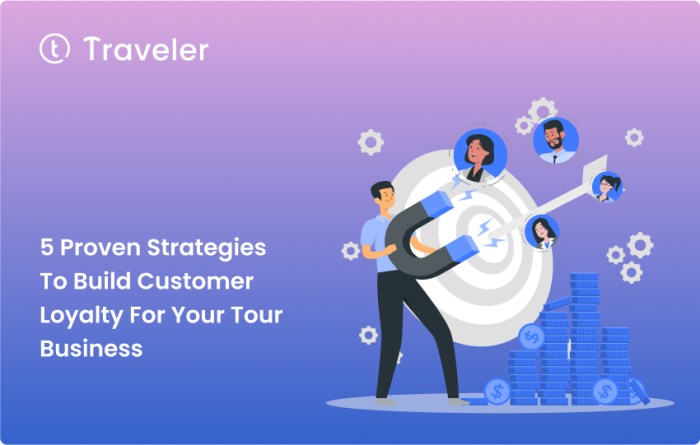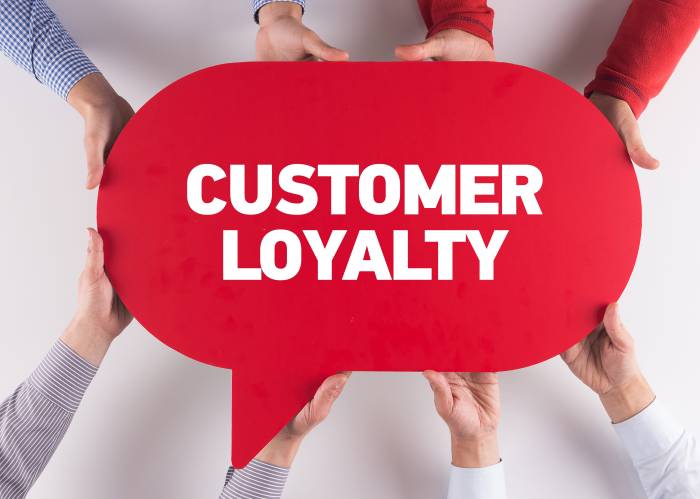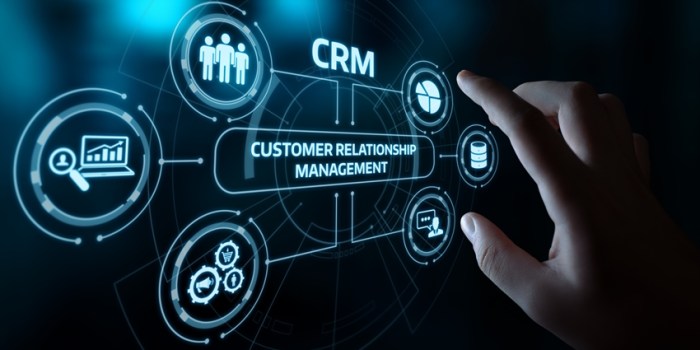Building Customer Loyalty Through CRM A Powerful Strategy
Building Customer Loyalty Through CRM is not just a buzzword, it’s a strategic imperative for businesses seeking sustainable growth. In today’s competitive landscape, acquiring new customers is expensive and often fleeting. Instead, focusing on retaining existing customers through a robust CRM strategy proves to be a more cost-effective and ultimately rewarding approach.
By leveraging the power of CRM systems, businesses can gather valuable insights into customer preferences, purchase history, and engagement patterns. This data empowers companies to personalize interactions, deliver tailored experiences, and build stronger customer relationships.
The Importance of Customer Loyalty: Building Customer Loyalty Through CRM

In today’s competitive business landscape, acquiring new customers can be expensive and time-consuming. Businesses need to focus on building long-term relationships with their existing customers, fostering loyalty that translates into repeat purchases and positive word-of-mouth. Customer loyalty is a powerful asset that can drive sustainable growth and profitability.
Benefits of Customer Loyalty
Customer loyalty brings numerous benefits to businesses, including increased revenue, reduced costs, and enhanced brand reputation. Loyal customers are more likely to make repeat purchases, spend more on average, and try new products or services offered by the company. They are also less price-sensitive and more forgiving of occasional mistakes.
The Cost of Acquiring New Customers
Acquiring new customers is significantly more expensive than retaining existing ones. Studies have shown that it can cost five to seven times more to acquire a new customer than to retain an existing one. This is because acquiring new customers involves marketing and advertising costs, while retaining existing customers requires nurturing relationships and providing excellent customer service.
Examples of Companies with Strong Customer Loyalty Programs
Many companies have successfully implemented customer loyalty programs that have resulted in increased customer retention and brand advocacy. Some notable examples include:
- Amazon Prime: Amazon’s Prime membership program offers free shipping, streaming services, and exclusive deals, creating a strong incentive for customers to remain loyal.
- Starbucks Rewards: Starbucks’ loyalty program allows customers to earn points for purchases and redeem them for free drinks and other rewards. The program encourages frequent visits and builds a sense of community among members.
- AppleCare+: Apple’s extended warranty program provides peace of mind to customers and encourages them to invest in Apple products. The program also includes technical support and other benefits, further strengthening customer loyalty.
The Role of CRM in Building Loyalty
CRM systems are essential tools for building customer loyalty by enabling businesses to gather, analyze, and leverage customer data to create personalized experiences. By understanding customer needs and preferences, businesses can tailor their interactions and offerings to foster stronger relationships.
Collecting and Analyzing Customer Data
CRM systems provide a centralized repository for capturing and storing customer data from various sources, including website interactions, sales transactions, marketing campaigns, and customer service interactions. This data can be analyzed to identify trends, patterns, and insights into customer behavior. For example, a business might analyze website traffic data to understand which products or services are most popular, or they might analyze customer service interactions to identify common pain points.
- Customer Demographics: Age, location, gender, income, education, and occupation. This data helps businesses target specific customer segments with relevant marketing messages and offers.
- Purchase History: Products purchased, purchase frequency, average order value, and preferred payment methods. This data enables businesses to personalize recommendations and promotions based on past purchases.
- Website Activity: Pages visited, time spent on pages, search queries, and abandoned carts. This data helps businesses understand customer interests and improve website navigation and product discoverability.
- Customer Service Interactions: Support requests, feedback, and complaints. This data allows businesses to identify areas for improvement in customer service and product quality.
- Social Media Activity: Posts, comments, likes, and shares. This data provides insights into customer sentiment and brand perception.
Personalizing Customer Interactions and Experiences
By analyzing customer data, businesses can personalize interactions and experiences to make customers feel valued and understood. This can include:
- Personalized Product Recommendations: Recommending products or services based on past purchases, browsing history, or similar customer profiles.
- Targeted Marketing Campaigns: Delivering relevant marketing messages and offers based on customer demographics, interests, and purchase history.
- Personalized Communication: Using customer names, preferred communication channels, and past interactions to create a more personalized experience.
- Proactive Customer Service: Identifying potential issues and proactively reaching out to customers before they escalate.
Segmenting Customers and Tailoring Marketing Campaigns, Building Customer Loyalty Through CRM
CRM systems enable businesses to segment their customer base into different groups based on shared characteristics, such as demographics, purchase history, or website behavior. This allows businesses to tailor marketing campaigns and messages to specific segments, increasing the likelihood of engagement and conversion. For example, a business might segment its customers into “loyal customers,” “new customers,” and “at-risk customers” and tailor its marketing efforts accordingly.
Strategies for Building Customer Loyalty

Building customer loyalty is crucial for any business to thrive. It leads to increased revenue, reduced marketing costs, and positive word-of-mouth referrals. Customer Relationship Management (CRM) systems are powerful tools that can be leveraged to implement effective loyalty-building strategies.
Strategies for Building Customer Loyalty
Here are some strategies that can be used to build customer loyalty, along with examples of how CRM tools can be used to implement them:
| Strategy | Description | Example | Benefits |
|---|---|---|---|
| Personalized Communication | Tailoring messages and offers to individual customer preferences and behavior. | Using CRM data to send personalized email campaigns based on past purchases, browsing history, or demographics. | Increased engagement, higher conversion rates, and improved customer satisfaction. |
| Loyalty Programs | Rewarding customers for repeat business and engagement. | Implementing a points-based program where customers earn points for purchases, referrals, or other activities, which can be redeemed for discounts, free products, or exclusive experiences. | Increased customer retention, higher average order value, and improved brand advocacy. |
| Exclusive Offers and Discounts | Providing special deals and promotions to loyal customers. | Using CRM to segment customers and offer targeted discounts or early access to new products based on their purchase history or engagement level. | Enhanced customer value perception, increased sales, and improved customer satisfaction. |
| Excellent Customer Service | Providing prompt, efficient, and personalized support to customers. | Using CRM to track customer interactions, manage support tickets, and provide personalized solutions to address customer issues. | Improved customer satisfaction, reduced churn rates, and positive word-of-mouth referrals. |
| Community Building | Creating a sense of belonging and connection among customers. | Using CRM to facilitate online forums, social media groups, or loyalty programs that encourage customer interaction and feedback. | Enhanced brand loyalty, increased customer engagement, and valuable insights into customer needs and preferences. |
Measuring and Tracking Customer Loyalty
It’s not enough to simply implement strategies to build customer loyalty; you need to measure and track your progress to ensure your efforts are effective. By understanding how your customers are engaging with your brand and identifying areas for improvement, you can continually refine your strategies and optimize your customer relationships.
Key Metrics for Measuring Customer Loyalty
Understanding the key metrics can help you gain insights into customer behavior and measure the success of your loyalty-building initiatives.
- Customer Lifetime Value (CLTV): This metric represents the total revenue a customer is expected to generate over their entire relationship with your business. A higher CLTV indicates loyal customers who are more likely to make repeat purchases and contribute significantly to your revenue.
- Customer Churn Rate: This metric measures the percentage of customers who stop doing business with you within a specific time frame. A high churn rate indicates a problem with customer retention, while a low churn rate suggests that your customers are satisfied and likely to stay.
- Net Promoter Score (NPS): NPS is a widely used metric to gauge customer loyalty and satisfaction. Customers are asked to rate their likelihood of recommending your brand on a scale of 0 to 10. Scores are categorized as Promoters (9-10), Passives (7-8), and Detractors (0-6). A higher NPS score indicates a higher level of customer loyalty and advocacy.
- Repeat Purchase Rate: This metric tracks the percentage of customers who make repeat purchases within a certain period. A high repeat purchase rate suggests that customers are satisfied with your products or services and are likely to return for more.
Tracking Metrics with CRM Systems
CRM systems are powerful tools for tracking customer loyalty metrics. They can collect and analyze data from various touchpoints, including:
- Customer interactions: CRM systems can track interactions with customers through email, phone, chat, and social media. This data can be used to understand customer preferences, identify issues, and personalize communication.
- Purchase history: CRM systems can track purchase history, including dates, products, and amounts. This data can be used to calculate repeat purchase rates and CLTV.
- Customer feedback: CRM systems can collect customer feedback through surveys, reviews, and social media comments. This data can be used to measure NPS and identify areas for improvement.
Analyzing Data and Identifying Areas for Improvement
Once you have collected data on customer loyalty metrics, you can analyze it to identify areas for improvement. Here are some tips:
- Segment your customers: Segment your customers based on factors like demographics, purchase history, and engagement levels. This allows you to tailor your loyalty-building strategies to specific customer groups.
- Identify trends: Look for patterns in customer behavior over time. Are certain customer segments more likely to churn? Are there specific products or services that lead to higher customer satisfaction?
- Set benchmarks: Establish clear benchmarks for your key loyalty metrics. This allows you to track your progress over time and identify areas where you need to improve.
- Use data to personalize communication: Use the data you collect to personalize your communication with customers. This can include targeted offers, personalized recommendations, and proactive customer service.
Case Studies of Successful Customer Loyalty Programs

Customer loyalty programs are a powerful tool for businesses to foster long-term relationships with their customers. These programs offer incentives and rewards for repeat purchases, encouraging customers to engage with the brand and build stronger connections. Let’s explore some notable examples of successful customer loyalty programs.
Examples of Successful Customer Loyalty Programs
Successful customer loyalty programs are often characterized by their ability to provide personalized experiences, offer valuable rewards, and create a sense of community among members.
| Company | Loyalty Program | Key Features |
|---|---|---|
| Amazon | Amazon Prime |
|
| Starbucks | Starbucks Rewards |
|
| Sephora | Beauty Insider |
|
Impact of Customer Loyalty Programs
These loyalty programs have significantly impacted customer loyalty for their respective companies. Amazon Prime has become a household name, with millions of subscribers enjoying its benefits and relying on Amazon for their daily needs. Starbucks Rewards has fostered a loyal customer base, with customers consistently choosing Starbucks for their coffee fix due to the program’s personalized offers and rewards. Sephora’s Beauty Insider program has successfully built a community of beauty enthusiasts, who are eager to explore new products and engage with the brand.
In conclusion, building customer loyalty through CRM is a journey, not a destination. It requires a commitment to understanding customer needs, fostering meaningful relationships, and continuously adapting strategies to meet evolving expectations. By investing in CRM and implementing effective loyalty-building initiatives, businesses can unlock the true potential of their customer base, driving long-term growth and profitability.
Key Questions Answered
What are the key benefits of using a CRM system for customer loyalty?
CRM systems offer numerous benefits for building customer loyalty, including personalized communication, targeted marketing campaigns, improved customer service, and valuable data insights for better decision-making.
How can I measure the success of my customer loyalty program?
Key metrics to track include customer lifetime value (CLTV), customer churn rate, Net Promoter Score (NPS), and repeat purchase rate. These metrics provide insights into customer satisfaction, retention, and overall program effectiveness.
What are some common mistakes businesses make when implementing CRM for customer loyalty?
Common mistakes include failing to gather enough data, neglecting to personalize interactions, and not adapting strategies to evolving customer needs. It’s crucial to avoid these pitfalls for successful CRM implementation.

